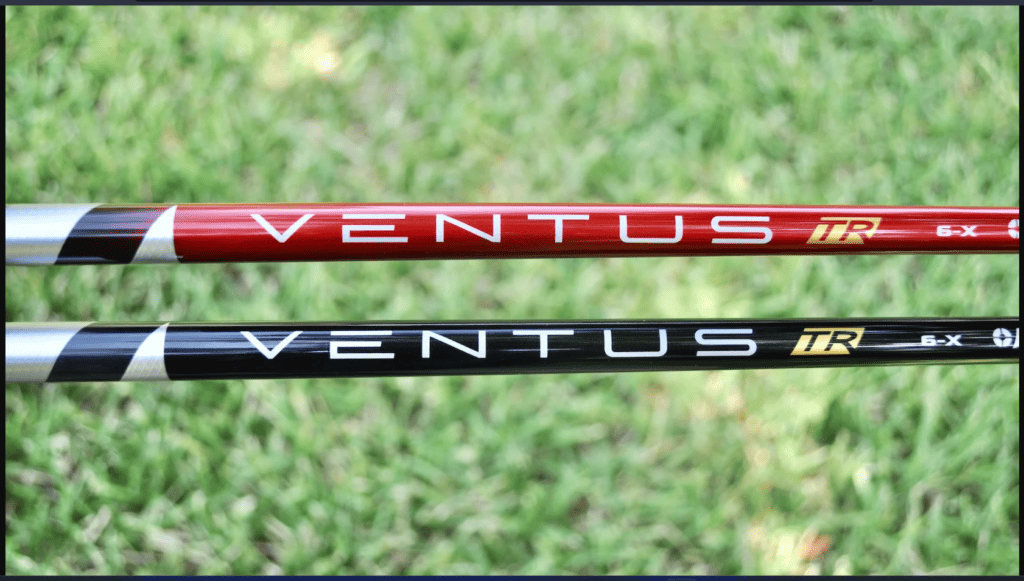Quick Guide: To cut a graphite shaft, follow these steps: 1. Mark desired length. 2. Secure the shaft in a vice. 3. Use a graphite shaft cutting tool for a clean cut. 4. Deburr the cut end. 5. Smooth with sandpaper if needed. Remember safety goggles and gloves. Take accurate measurements, cut gradually, and double-check the length.
When customizing golf clubs or replacing a damaged shaft, knowing how to cut a graphite shaft properly is crucial. The process requires precision and care to ensure the shaft retains its integrity and performance.
In this guide, we will walk you through the steps of cutting a graphite shaft, providing essential tips and precautions along the way.
Table of Contents
How to Cut a Graphite Shaft? Step By Step Guide

Tools and Materials Needed
Before diving into the process, gather the necessary tools and materials. Here’s what you’ll need:
- Graphite shaft cutting tool: A dedicated graphite shaft cutting tool is essential for a clean and precise cut.
- Measuring tape or ruler: Accurate measurements are crucial for achieving the desired length.
- Masking tape or grip solvent: These can be used to secure the shaft and prevent splintering during the cutting process.
- Safety goggles and gloves: It’s important to protect yourself with safety goggles and gloves to prevent any potential injury.
Step-by-Step Guide to Cutting a Graphite Shaft
Now, let’s break down the process of cutting a graphite shaft into simple steps:
01- Marking the desired length: Mark the desired length on the shaft using a measuring tape or ruler. Consider any adjustments based on your playing style or recommendations from a professional club fitter.
02- Securing the shaft: Secure the shaft in a vise or shaft holder, making sure it is stable and won’t move during the cutting process. If using a vise, protect the shaft by wrapping it with masking tape or using grip solvent.
03- Cutting the shaft: Using the graphite shaft cutting tool, carefully follow the manufacturer’s instructions to make a clean cut. Apply even pressure while cutting, allowing the tool to do the work. Avoid rushing or applying excessive force, as this may damage the shaft.
04- Deburring the cut end: After the cut, use a deburring tool or fine sandpaper to remove any rough edges or splinters from the cut end. Smooth it out gently to ensure a clean finish.
05- Applying finishing touches: Inspect the cut end for any imperfections or irregularities. If necessary, lightly sand the area to achieve a smooth and uniform surface.
Precautions and Tips
To ensure safety and a successful cut, keep these precautions and tips in mind:
- Always wear safety goggles and gloves to protect yourself from any potential hazards during the cutting process.
- Take accurate measurements and double-check before making the cut to avoid any mistakes.
- Cut the shaft gradually, applying steady and even pressure to prevent splintering or cracking.
- Avoid excessive force, as graphite shafts are delicate and can be easily damaged.
- Prioritize safety over speed and maintain a steady pace throughout the cutting process.
Post-Cutting Considerations
Once the graphite shaft has been cut, there are a few additional considerations:
Installing the clubhead: Follow the manufacturer’s instructions to properly install the clubhead onto the newly cut shaft. Ensure a secure and snug fit.
Regripping the club: Remove the old grip and regrip the club. Seek professional assistance or follow instructional guides for a proper regripping process.
Testing the club for proper performance: Before heading out to the course, take some swings and observe the club’s performance. Pay attention to any changes in feel or ball flight. Seek further adjustments or professional advice if needed.
Unleash Your Inner Pro with the Project X Hzrdus T800 Graphite Shaft
sporticmedia.com
Will cutting a golf shaft make it stiffer? and what changes happen when cut?
Cutting a golf shaft can have an impact on its stiffness and overall performance characteristics. When a shaft is cut, several changes occur:

Stiffness
Cutting a golf shaft typically results in a slight increase in stiffness. This is because removing a portion of the shaft reduces its overall length, altering the flex properties.
The extent of the stiffness change will depend on the amount of the shaft that is cut and the design of the shaft itself. It’s important to note that the change in stiffness may not be significant and can vary between different shaft models.
Swing Weight
Cutting a golf shaft also affects the swing weight of the club. Swing weight refers to the club’s balance point and how it feels during the swing. Shortening the shaft shifts the balance point closer to the grip end, making the club feel slightly lighter during the swing. This change in swing weight can impact the feel and control of the club.
Overall Weight
The weight of the shaft may be slightly reduced when it is cut, although the effect is generally minimal. Manufacturers often design shafts with specific weight distributions, and cutting the shaft somewhat alters that distribution.
However, the weight change resulting from cutting the shaft is usually not significant enough to impact performance substantially.
Clubhead Feel
Cutting a shaft may influence the overall feel of the clubhead. The reduced length can affect the balance and the clubhead’s interaction with the ball. Golfers may perceive subtle differences in the club’s response at impact, such as sound, feedback, or the sensation of power transfer.
It’s worth noting that any modifications to a golf shaft, including cutting, should be done with care and consideration. Consulting with a professional club fitter or knowledgeable golf equipment specialist can provide valuable guidance in determining the appropriate length and any potential effects on the club’s performance.
How to replace a golf club shaft at home?
Replacing a golf club shaft at home requires some specialized tools and knowledge. While it is possible to replace a shaft yourself, seeking assistance from a professional club builder or club repair specialist is recommended.
They have the expertise and experience to ensure a proper and safe shaft replacement. However, if you still wish to attempt it at home, here are the general steps involved:
01- Gather the necessary tools and materials
You will need a shaft extractor tool, heat gun or torch, shaft epoxy, double-sided tape, grip solvent, new shaft, and any other tools specific to your club and shaft replacement process.
02- Remove the old shaft
Secure the clubhead in a vice using a soft protective material to prevent damage. Use a shaft extractor tool to loosen and remove the old shaft from the clubhead.
Apply heat using a heat gun or torch to soften the epoxy holding the shaft in place. Be cautious and follow safety instructions when using heat tools.
03- Clean the hosel
Once the old shaft is removed, clean the hosel of any remaining epoxy residue. Ensure the hosel is clean and free of debris for proper adhesion of the new shaft.
04- Prep the new shaft
Prepare the new shaft by applying double-sided tape or grip solvent to the tip. This will provide a secure connection between the shaft and the clubhead.
05- Apply epoxy
Apply epoxy adhesive to the inside of the hosel and the tip of the new shaft. Be sure to use epoxy specifically designed for golf club assembly. Insert the shaft into the hosel, making sure it is aligned properly and fully inserted. Wipe off any excess epoxy.
06- Cure the epoxy
Follow the manufacturer’s instructions for curing the epoxy. This usually involves letting the club sit undisturbed for several hours or overnight to ensure a strong bond.
07- Install the grip
After the epoxy has fully cured, install a new grip on the shaft. Apply grip solvent to the grip and the inside of the grip to facilitate installation. Slide the grip onto the shaft and align it properly. Allow the grip to dry and set according to the instructions.
08- Final adjustments
Check the club’s specifications, such as loft, lie angle, and swing weight, and make any necessary adjustments if applicable.
It’s important to note that replacing a golf club shaft requires precision and attention to detail. Any mistakes or improper techniques can negatively affect the club’s performance and safety. If you’re unsure or uncomfortable with the process, it’s best to seek professional assistance to ensure a proper and reliable shaft replacement.
Exploring the Benefits of a Low Launch Low Spin Driver Shafts
sporticmedia.com
Conclusion
Cutting a graphite shaft requires careful attention to detail and adherence to the outlined steps. By following these guidelines, you can achieve a precise and clean cut, ensuring the integrity and performance of the shaft. Remember to prioritize safety and take your time throughout the process. With patience and the right tools, you can successfully cut a graphite shaft and customize your golf clubs to suit your preferences.
Discover the meticulous and expert-driven process behind our product reviews at Sportic Media. Our comprehensive guide, led by industry veterans, ensures you get the most reliable and detailed insights into golf equipment. Dive into our methodical approach by visiting How We Test Products at Sportic Media: A Comprehensive Guide
.







